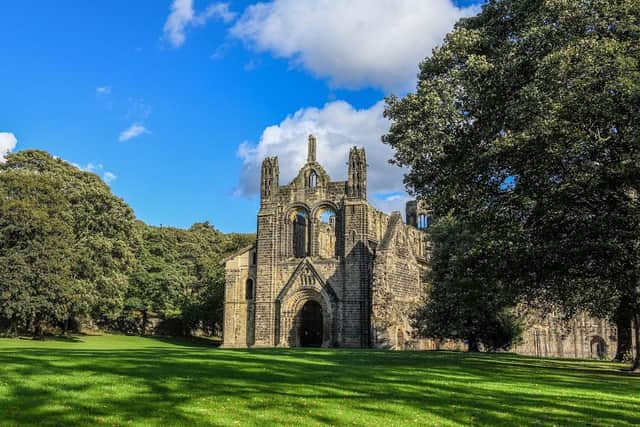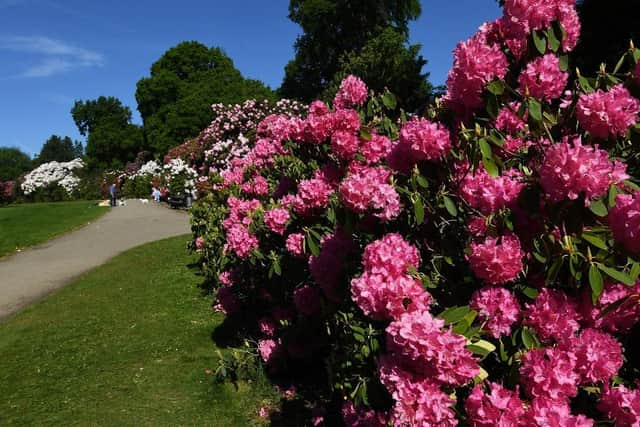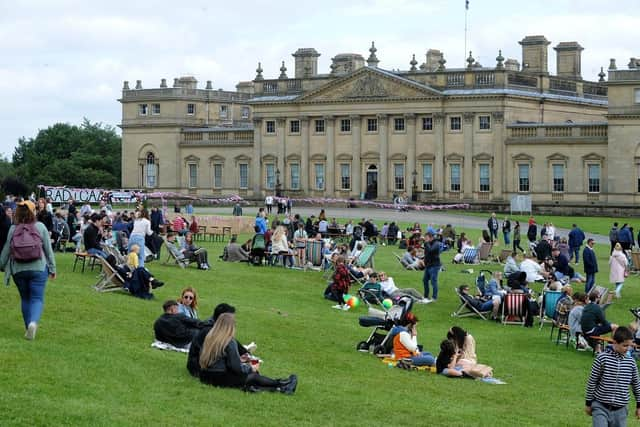Oldest and most historic buildings in and around Leeds including All Hallows Church, Bramham Park and Harewood House
Leeds’ name originally derives from Loidis, which was anciently a forested area of the Celtic kingdom of Elmet. It became a thriving manor under the overlordship of Ilbert de Lacy in 1086 and gained its first charter in 1207.
It slowly grew throughout the mediaeval and Tudor eras and became a Royalist stronghold at the beginning of English Civil War. Leeds particularly blossomed during the 17th and 18th centuries and expanded as a centre of the woollen industry and continued to prosper in the Industrial Revolution.
Advertisement
Hide AdAdvertisement
Hide AdHeritage is a large part of what makes Leeds a major tourism hotspot; Leeds is also the only city outside London to have both its own opera and ballet companies. Some of the top tourist attractions in and around Leeds are also some of the oldest buildings including Harewood House, Temple Newsam, Bramham Park and Kirkstall Abbey.


Oldest buildings in and around Leeds
Temple Newsam
The manor is listed as Neuhusam, which means new houses, in the Domesday Book of 1086 and was owned by Ilbert de Lacy and his sons.
Before the Norman Conquest of 1066 it had been held by Dunistan and Glunier, Anglo-Saxon thanes.


The Knights Templar took over the manor from Henry de Lacy in around 1155 and built Temple Newsam Preceptory on a site near the present house.
Advertisement
Hide AdAdvertisement
Hide AdThere were 1,100 animals housed at the estate owned by the Templars.
Kirkstall Abbey
Henry de Lacy, Lord of the manor of Pontefract, 2nd Lord of Bowland, chose to dedicate an abbey to the Virgin Mary should he survive a serious illness.


He recovered from his illness and agreed to give the Abbot of Fountains Abbey land at Barnoldswick in the West Riding of Yorkshire, now in Lancashire, on which to establish a daughter abbey.
The Cistercian monastery ruin was founded in 1152 and was disestablished during the Dissolution of the Monasteries under Henry VIII.
Harewood House
Advertisement
Hide AdAdvertisement
Hide AdThe country house was designed by architects John Carr and Robert Adam and was built between 1759 and 1771 for Edwin Lascelles, 1st Baron Harewood, a wealthy plantation and slave-owner.
The landscape, which spans 1,000 acres, was designed by Lancelot ‘Capability’ Brown.
Harewood House is still home to the Lascelles family and is now a member of the Treasure Houses of England.
It is a Grade I listed building and numerous features in the grounds and courtyard have been listed Grade I and II.
Whitelock’s Ale House
Advertisement
Hide AdAdvertisement
Hide AdWhitelock’s Ale House was first opened in 1715 as the Turk’s Head, it is still called Turk’s Head Yard. During that period it would have most likely been catered especially for merchants and market traders and the pub was particularly busy on Tuesdays and Saturdays when Briggate market was populated with people.
In 1867 the licence of the Turk’s Head was handed to John Lupton Whitelock and in the 1880s the Whitelock family bought the pub and in 1886 refurbished the pub.
Bramham Park
The Baroque mansion was first built in 1698 for Robert Benson, 1st Baron Bingley and is a Grade I listed building located between Leeds and Wetherby.
It was constructed from magnesian limestone ashlar with stone slate roofs in a classical style and the main block is made up of three storeys with a raised forecourt.
Advertisement
Hide AdAdvertisement
Hide AdThe Baroque is an architectural style that was popularised in Europe from the early 17th century to the 1750s.
All Hallows Church, Bardsey
All Hallows is an Anglican parish church in the archdeaconry of Leeds and the Diocese of Leeds which was built in the 9th century.
Its tower is considered the oldest surviving part from between 850 and 950 AD and the latest restoration was conducted by Charles R. Chorley and Son of Leeds in 1909.
Comment Guidelines
National World encourages reader discussion on our stories. User feedback, insights and back-and-forth exchanges add a rich layer of context to reporting. Please review our Community Guidelines before commenting.
